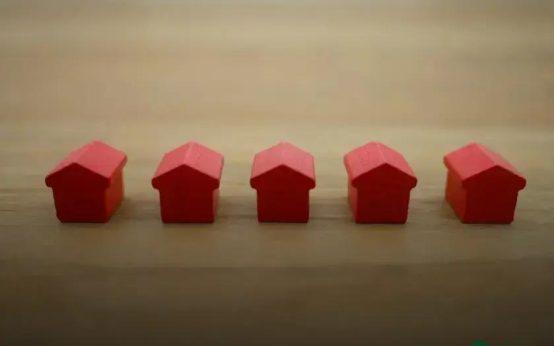Saving for a house down payment faster starts with clear goals and smart budgeting. In today’s market, understanding how to create, maintain, and grow savings effectively is crucial. This guide will explore practical steps to help you reach your goal sooner. From reducing expenses to leveraging technology, discover proven strategies under our well-structured sections designed to maximize your savings potential.
Set Clear Savings Goals
Setting clear savings goals is essential when preparing to buy a house. To start, determine the exact amount you need for your down payment. This amount usually ranges from 5% to 20% of the purchase price. Knowing the precise figure will provide you with a target to work towards.
Once you’ve figured out your goal, break it down into smaller, manageable milestones. For instance, if you aim to save $20,000 in two years, you should set a monthly savings goal of around $834. This approach makes the entire process less daunting and more achievable.
Also, be realistic with your goals. Consider your current financial situation, income, and monthly expenses. Setting a goal that’s too aggressive might lead to frustration, while a goal that’s too easy won’t push you to save effectively.
Regularly review and adjust your goals as needed. If you receive a pay raise or a bonus, it might be wise to increase your monthly savings. Conversely, if you encounter unexpected expenses, you may need to adjust your timeline or find other ways to save.
Creating a tangible representation of your goals can also help. Visualize your progress by using charts or apps that let you track your savings. Seeing how far you’ve come can be incredibly motivating and help keep you on track.
Remember, the clearer and more defined your savings goals, the easier it will be to stay focused and motivated on your journey to purchasing a home.
Create and Stick to a Budget
One of the most crucial steps in saving for a house down payment is to create and stick to a budget. Budgeting helps to track expenses and ensures money is being directed towards savings goals efficiently. Start by identifying your monthly income and categorize all your fixed and variable expenses. This process involves fixed commitments, like rent and utilities, as well as variable spending, such as dining out and entertainment.
Once you have a clear picture of where your money is going, evaluate which areas you can cut back on to free up more funds for your down payment. Setting spending limits in each category is also crucial, as it instills discipline and prevents overspending. Consider employing the 50/30/20 rule—allocating 50% for needs, 30% for wants, and 20% for savings and debt repayments.
It’s also beneficial to monitor spending patterns over several months to adjust your budget as needed. Usage of a simple spreadsheet or dedicated budgeting apps can assist in keeping track of everything. Staying within your budget requires constant vigilance but it is an achievable goal with deliberate effort and commitment. Automating savings by setting up direct deposits into a savings account is a powerful tool to prevent the temptation to spend and to ensure consistent saving habits. Over time, you will see your down payment fund grow steadily.
By adhering to a strict budget, you’ll gain control over your finances and feel empowered to make substantial progress towards your home ownership ambitions. Patience, consistency, and commitment to this financial plan will be rewarded with substantial savings set aside for your down payment.
Reduce Unnecessary Expenses
- Identify unnecessary expenses: Begin by examining your bank statements and monthly bills to pinpoint those little purchases that add up over time, such as dining out, subscriptions you no longer use, or impulse buys.
- Prioritize essentials: Allocate funds primarily towards essentials like housing, groceries, and transportation. This focus ensures your money is spent purposefully and helps you recognize areas where you can cut back.
- Implement cost-effective alternatives: Consider cooking meals at home instead of eating out, using public transportation when feasible, or canceling luxury memberships you barely use. Small changes can lead to significant savings.
- Practice mindful spending: Before making a purchase, ask yourself if it brings you closer to your goal of saving for a house. This mindfulness curbs impulsive spending and encourages better financial habits.
- By diligently identifying and reducing unnecessary expenses, you’re more likely to bolster your savings efficiently, accelerating your journey toward a new home.
Increase Your Income Streams
Increase Your Income Streams
Boosting your earning power can significantly enhance your ability to save for a house down payment. While a traditional full-time job might be your primary source of income, exploring additional streams can accelerate your savings plan. Consider pursuing freelance opportunities if you have marketable skills such as writing, graphic design, or software development. These gigs often offer flexible hours and can be performed remotely.
Another option is to turn your hobbies into income. If you enjoy crafting, consider selling your products on platforms like Etsy. Likewise, if you have a knack for photography or music, explore avenues to sell your work online. Passive income streams are also worth considering. Invest in dividend stocks or rental properties, which can provide a continuous revenue flow with minimal effort.
Moreover, don’t underestimate the power of systems and resources at your disposal. Seek out online courses and workshops to upskill and expand your qualifications. These efforts can lead to a salary raise or a better-paying position. Maximize your time efficiently, and remember that diversifying your income can also mitigate financial risks.
Take Advantage of Technology and Apps
Today’s digital age offers a plethora of apps and technology designed to assist you in your savings journey. Make full use of budgeting apps like Mint or YNAB (You Need A Budget), which help track your expenses and savings automatically. By connecting these apps to your bank accounts, you can visualize where your money goes and make informed decisions to save more effectively.
Consider using round-up apps like Acorns that automatically round up purchases to the nearest dollar, investing the difference. This effortless method accelerates savings without significant sacrifices in daily spending.
Stay Informed and Motivated
Utilize alerts and notifications to remain up-to-date on promotional offers and discounts, reducing unnecessary expenses. Furthermore, employ apps that provide goal-tracking features to visualize your progress. Seeing how much you’ve saved over time can be a powerful motivator to continue with your saving habits.
Don’t forget about the myriad of educational resources readily accessible through technology. Leverage financial blogs, podcasts, and online courses to deepen your understanding of personal finance. These tools are vital for discovering advanced savings techniques that could further enhance your ability to set aside funds for your down payment.
By integrating technology into your financial routine, you streamline the savings process, allowing for more comprehensive management of your funds. Apps and technology not only simplify tracking but also provide opportunities for informed financial planning.





